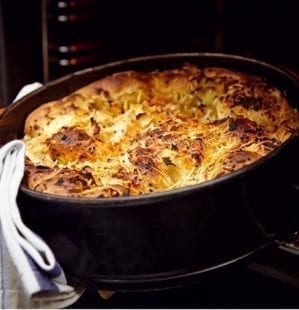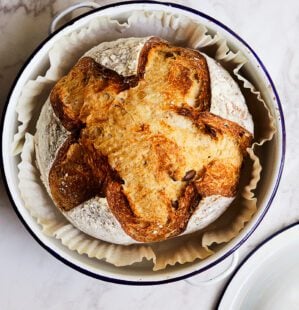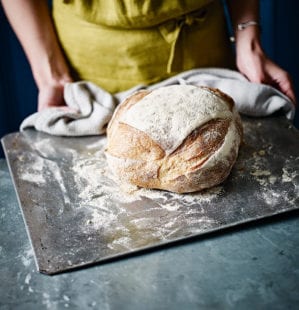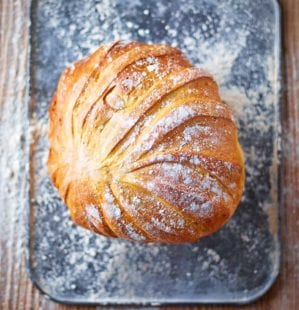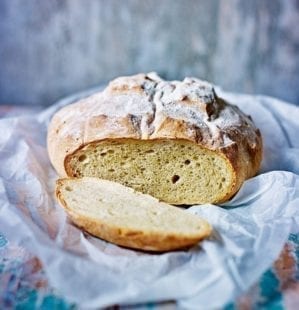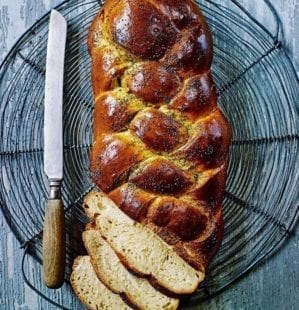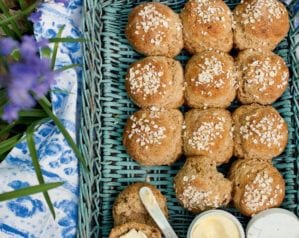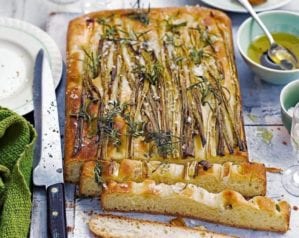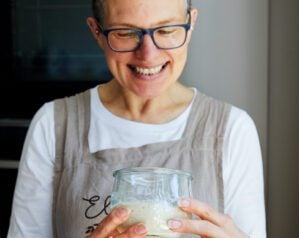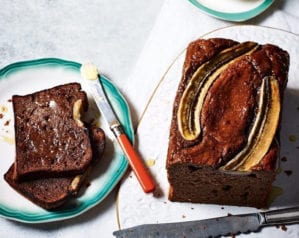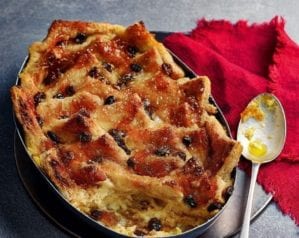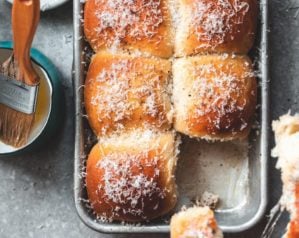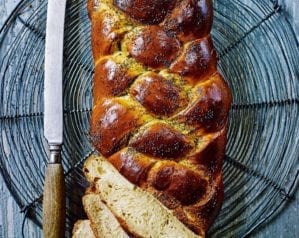
White loaf
- Published: 31 Aug 10
- Updated: 18 Mar 24
A home-made farmhouse or cottage loaf appeals to all the senses: the aroma that fills the kitchen as it bakes is unbeatable and the flavour knocks the socks off most shop-bought white loaves.
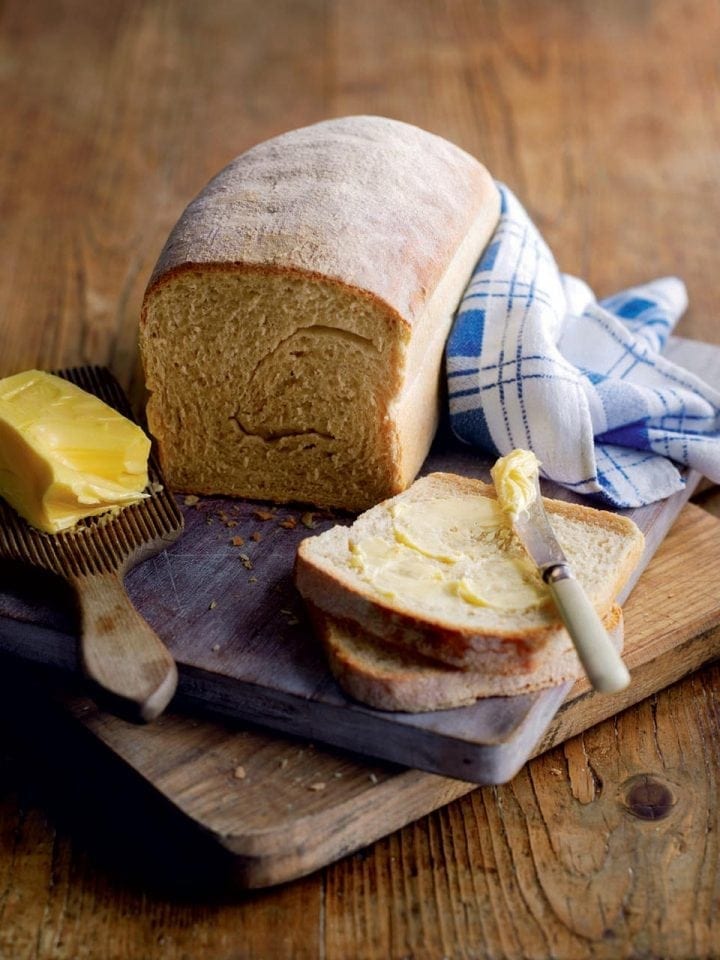
-
Makes 1 large loaf (12 slices)
-
Takes 20 minutes to make, 30-35 minutes to cook, plus rising and proving
Ingredients
- 500g strong white flour (preferably organic), plus extra for dusting
- 2 tsp finely ground sea salt
- 15g fresh yeast
- 1 tsp unrefined caster sugar
- Olive oil for greasing
Method
- Sift the flour and salt into a large bowl and make a well in the centre. Measure 300ml lukewarm water. In a small bowl, mix the yeast with the sugar and 2 tbsp of the water. Stir until dissolved, then leave for 2 minutes – it should froth slightly. Pour into the well along with the rest of the water. Mix quickly with a wooden spoon, drawing the flour in to form a soft, pliable dough (add a splash more water, if needed).
- Tip onto a lightly floured work surface and knead vigorously for 10 minutes until the dough is smooth and elastic – when the gluten in the flour has been developed. It should spring back if you press it gently with your finger. Shape the dough into a ball.
- Oil a clean bowl, place the dough inside and cover with lightly oiled cling film or a clean tea towel. Leave in a warm place for 45 minutes or until it’s twice the size.
- Tip the dough onto a lightly floured work surface and briefly knead again. This process of ‘knocking back’ helps to remove pockets of air, evening out the texture and redistributing the yeast. Shape the dough by gently working it into an oblong, then folding both ends over (see right). Flip the dough over, so the smooth side is uppermost, and place in a lightly oiled 900g loaf tin. Cover loosely with lightly oiled cling film (or place in a lightly oiled plastic bag) and return to a warm place for a further 20 minutes until it has doubled in size again and risen above the top of the tin (this is called proving). Towards the end of proving, preheat the oven to 220°C/fan200°C/gas 7.
- Dust the top of the dough with flour and place in the top half of the oven for 30-35 minutes until the crust is golden. Carefully remove the loaf from its tin and tap the bottom – if done, it should sound hollow. You can return the loaf to the oven upside down (without the tin) for 5 minutes more to crisp the base and sides, if necessary.
- Cool the loaf on a wire rack. Enjoy thick slices slathered with creamy butter and home-made strawberry jam.
- Recipe from September 2010 Issue
FAQs
Can I freeze this after baking?
Yes you can. Cool, then wrap in paper and cling film. Freeze for up to 3 months. Defrost at room temperature.
Can I shape this by hand instead of in a loaf tin?
Yes you can! To bake a rustic cottage loaf... simply shape into an oval or round, then bake on a baking sheet.
What flavourings could I use in this bread?
Try adding flavourings such as nuts, herbs, spices, cheese, softened onion, sun-dried tomatoes or dried fruit. Knead in at the knocking-back stage. Beer also makes a good addition. Simply replace 75ml of the water with your favourite ale.
delicious. tips
Make it wholemeal… Replace half the flour with strong organic wholemeal. You’ll need about 2 tbsp more water. Sprinkle over sunflower, pumpkin and poppy seeds or rolled oats before baking. Or try glazing with whisked egg or milk for a golden crust.
Go for a super-crisp crust… Slash the top of the loaf with a sharp knife a few times before baking, and preheat the oven with a roasting tin in the bottom. Throw in a handful of ice cubes when you put the loaf in – the steam gives a crisp crust.
Buy ingredients online
Rate & review
Rate
Reviews
Subscribe to our magazine
Food stories, skills and tested recipes, straight to your door... Enjoy 5 issues for just £5 with our special introductory offer.
Subscribe
Unleash your inner chef
Looking for inspiration? Receive the latest recipes with our newsletter

